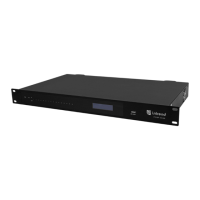Operating Manual for Digital Sound Processor (DSP) V3.0
WWW.INTREND-AV.RU
5
1. Technology Overview
1.1 Introduction to Technology
DSP Series are equipped with several core technical features to facilitate the work of audio
engineers. DSP-based remote audio hardware is routed, processed and controlled via computer.
This Manual mainly introduces the techniques used to achieve the goal.
DSP Controller is a Windows-based application, which is used to conduct configuration and
control on DSP hardware. DSP Controller has 16 built-in presets, and the modules and sequences
for each preset can be flexibly designed in accordance with the designer's requirements. After
the design is finished, it can be saved for future use. The sequences and parameters of DSP
Controller's built-in processing modules accord to most of the application scenarios without any
change.
DSP Controller is a full-featured application including the parameter adjustment and
peripheral accessory settings of all modules, such as RS232, RS485, click-and-drag panel
configuration and Dante network audio control etc. The most interesting part is the user interface,
which allows the engineer to customize user interface so that the integrator can edit it or the
onsite technicians or end users who have no idea of relevant techniques can operate it. Superior
safety functions make it possible for the end users to access to the controls allowed by the
engineer or designer.
1.2 Audio Input Section
DSP supports up to 16 fixed analog audio inputs, which can be connected via removable
balanced phoenix connectors. The analog input section supports microphone or line-level signals
whose nominal levels are 0dBu, 10dBu, 20dBu, 30dBu, 40dBu and 43dBu. +48VDC phantom
power can be adopted for each input.
Preamp gain and phantom power can be conveniently controlled via DSP Controller.

